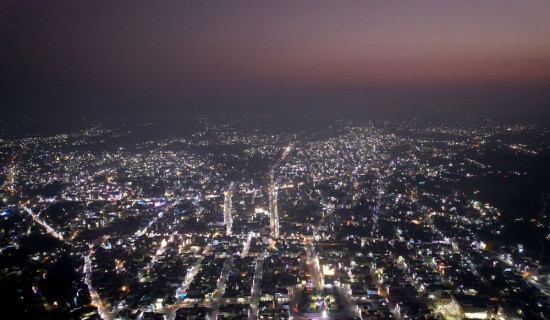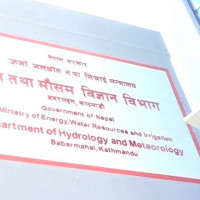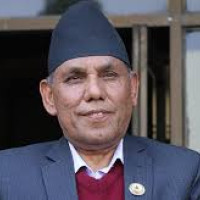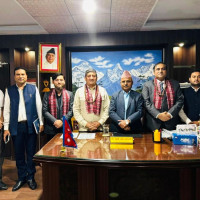- Tuesday, 21 October 2025
Sand mining shrinking river rafting business in Nepal
By Shaligram Nepal,Chitwan, Mar. 16: Up until two decades ago, the Trishuli River would be seen packed with rafters. That is no longer the case now. Why? Those involved in the rafting business say that the sector was dealt the first blow by the Maoist conflict that lasted till 2006.
But what has prevented it from recovering is the pollution created by the haphazard urbanisation of recent years and the over-extraction of sand from the riverbed by the local governments formed after 2017.
The situation has deteriorated to such an extent that Kamal Thakuri, a professional who has been providing rafting services on Trishuli for over 40 years, said that he was now thinking to give up the business.
“When I first started, the water was clear, the river was pristine and tourists used to come by the hundreds to raft. That has not been the case for quite a long time,” he said. “Immediately after the local levels got the right, they began exploiting the river for sand.
This, coupled with pollution, has made the water awfully dirty. This has also killed the fish here,” Thakuri added. “Add to this the COVID-19 pandemic which brought the number of tourists down to almost nil and it is not hard to see why many are quitting this business.”
The government has identified 16 rivers, including Trishuli, Bhotekoshi, Kaligandaki, Seti and Sunkoshi, as suitable for rafting. “However, all of them are polluted,” said Shiva Adhikari, president of the Nepal Association of Rafting Agencies (NARA). “Additionally, the government has also not been able to convince tourists to come to Nepal and enjoy the white-water adventure.”
And the effect is clear for all to see, presented Adhikari. There were 130 companies involved in the rafting business 20 years ago. Today, there are only 75. “The guides and technicians working in this sector have also left their jobs and gone abroad,” he shared.
The rampant misuse of Nepal’s water bodies by the local governments has destroyed the tranquillity of the rivers and caused environmental degradation and soil erosion, Adhikari mentioned, stating that the unilateral construction of hydropower dams had also blocked existing and potential rafting routes.
Bishwo Subedi, former general secretary of the Chitwan Tourism Development Committee, called it paramount for the government and other stakeholders to revive rafting in Nepal. “This will bring in revenue for the state and liven up local economies,” he believed.
Meanwhile, Dan Bahadur Gurung, chairman of Ichchhakamana Rural Municipality, said that his local level was sensitive about utilising natural resources without harming the environment. “We have banned the dumping of waste into the Trishuli and are trying to restore the former glory of the river. Let’s see how successful we can be,” he said.
Renu Dahal, mayor of Bharatpur Metropolitan City, said that her city was also working to protect the Narayani River and promote water tourism. “However, we alone cannot do everything. Narayani needs to be protected all along its course.” NARA claims that the rafting sector holds an investment of Rs. 10 billion which is at risk due to the present decline.






-original-thumb.jpg)









